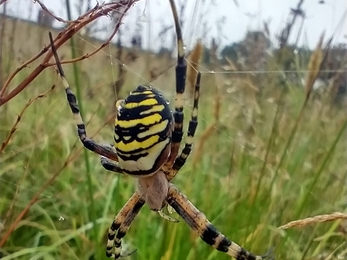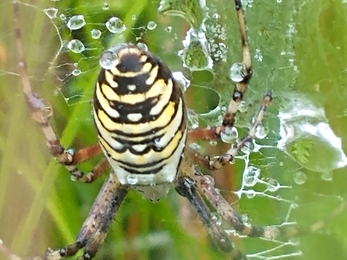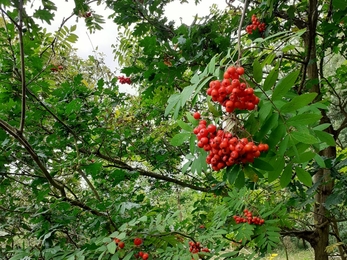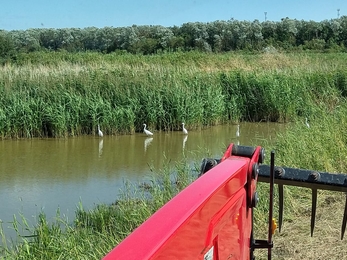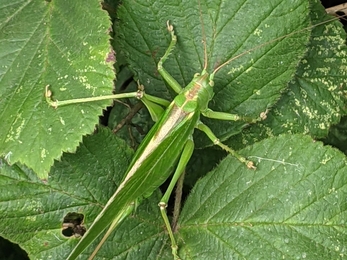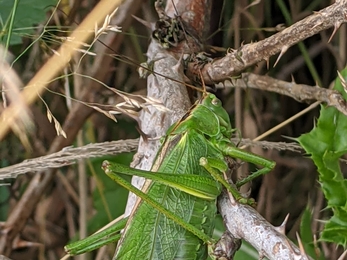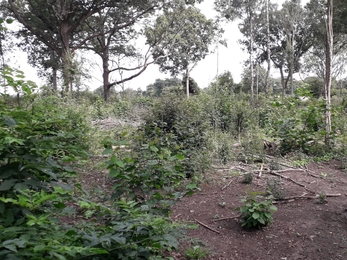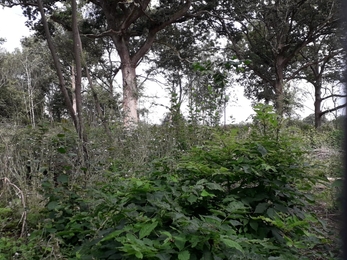Weekly wild news from our reserves – 20 August 2021
Hide progress at Lackford Lakes – Joe Bell-Tye
At almost 2cm long, the hornet mimic hoverfly is the largest UK hoverfly species, like this one seen at Bradfield Woods recently. With its black-and-yellow markings, the hornet mimic hoverfly looks like its namesake, but is harmless to us. Mimicking a toxic or dangerous animal is known as Batesian mimicry and helps to protect the hoverfly from predators while it searches for nectar.
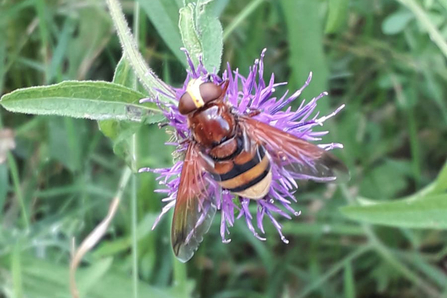
Hornet mimic hoverfly at Bradfield Woods – Alex Lack
Wasp spider
Another Batesian mimic; the female wasp spider looks like a common wasp, which keeps it safe from predators, even though it is not dangerous itself. It builds large orb webs in grassland and heathland and attaches its silk egg-sacs to the grasses. The web has a wide, white zig-zag strip running down the middle, known as a 'stabilimentum', the function of which is unclear.
Summer at Trimley Marshes
Trimley Marshes is looking pretty this week with the rowan trees in berry. The summer mowing is underway, and bird life abounds with autumn migrants passing through, including several sightings of wood sandpipers and little ringed plovers this week - well worth a visit!
Great green bush cricket
The great green bush-cricket is easily recognised as it is by far our largest bush-cricket. It is green with an orangey-brown stripe running the length of the body, and long wings, like this one seen at Dingle Marshes. It prefers light, dry soils into which the females can lay their eggs using their very long, down-curved ovipositors. The males display to females by rubbing their forewings together to produce a very loud, long 'song'; they sound like a sewing machine going continuously for long periods, but their expert camouflage still makes them hard spot. The nymphs do not have wings.
Coppicing results at Bradfield Woods
Bradfield Woods is looking lush and green six months after coppicing work. Coppicing is an ancient form of woodland management that involves repetitive felling on the same tree stump near to ground level. This allows shoots to regrow from that main stump which is also known as a coppice stool, with ‘coppice’ itself coming from the French word ‘coupe’, meaning ‘cut’. Coppicing an area or compartment of woodland allows more light to the floor, encouraging regrowth of a wide range of flora including the trees themselves with knock-on associated benefits for other wildlife such as dormice. Rotating this cutting practice across the woodland maximises age structure and allows for successional stages to create all important ‘edge’ habitat.
Double-decker going up
The team at Lackford Lakes have been busy erecting the new double-tier hide this week. Once complete the hide will provide visitors with a sheltered viewing area with a range of aspects and angles to spot the wonderful wildlife on the reserve.
Heather in bloom
Blaxhall Common is looking wonderful this week with the heather in full flower. The heathland is full of birds, butterflies, flowers and reptiles like this handsome (and quite speedy!) slow worm.
Topping continues
This week it was Castle Marshes' turn for topping. Topping typically involves cutting sections of rushes and grasses, complementing grazing management to further encourage structure and diversity within the marsh habitat and to encourage marshland plants to flourish.
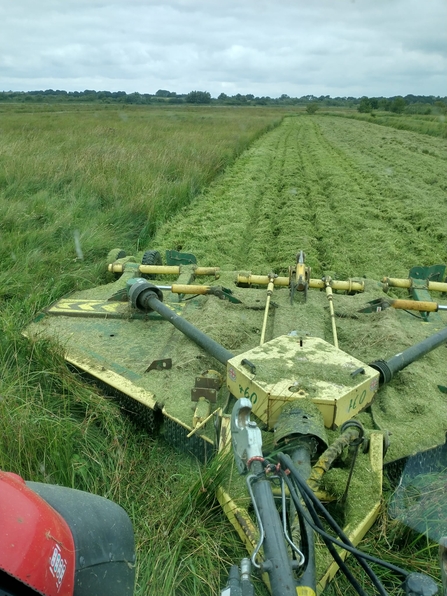
Topping Castle Marshes – Andrew Hickinbotham
Guided walks resume
The Waveney Valley wildlife group are thrilled to be getting back to their regular walks and talks across our reserves. This week the group had a tour of Carlton Marshes led by Andrew Hickinbotham, where the amazing wildlife was identified and management techniques explained.
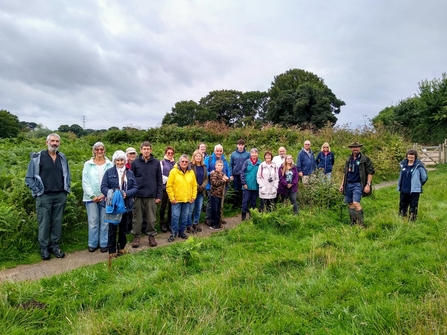
Guided walk at Carlton Marshes – Andrew Hickinbotham
Wall brown
The wall brown otherwise known as 'wall', is named for its habit of basking on walls. It is a declining resident butterfly these days, so is a good species to see on any walk. The Suffolk distribution is coastally biased, where it is not normally seen in large numbers, although Carlton Marshes is something of an exception and a local stronghold for them.
Their favourite spot at Carlton is the sluice wall along the river Waveney path at the northern end of the Share Marsh track. The Wall Brown is a conservation priority species because of recent rapid declines in their range and population.
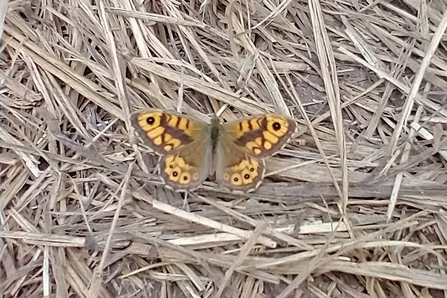
Wall Brown at Carlton Marshes – Andrew Hickinbotham


